Well, just over 4 years ago I encountered an Asian Food Market that sold live octopuses for food. I took a few home over time and after multiple tries with some of them lasting for months but never eating and slowly dying off, the store stopped carrying them and then eventually closed. Well, what do you know, another store about a mile away started carrying them and I stumbled across it the other day as I waited for my kids to finish up a rehearsal. I ended up buying a couple of sorry looking specimens that I figured were too far gone to save, but I figured I'd give it a try anyway. These are not ones that they will stop importing because no one buys them, so when I purchase them and bring them home I don't feel bad for propagating the problem - they sell pretty quickly there to be eaten alive and the ones that don't get sold die off pretty quickly due to being housed in systems with live foods like lobster, crab, various fish, abalone, and geoduck clams (never saw one of these live before - they are humongous!). Anyway, back on topic, the other day I bought a couple of them with little hope that they would survive and converted an existing tank with some random inverts in it (urchins, clams, serpent stars, and cucumbers) over to a cold water system. This particular tank has housed multiple other animals over the years including the long surviving but never eating last experiment with one of these guys.
The last time I purchased them, I determined that they were most likely the Japanese Long Arm Octopus, but didn't get much beyond that. There are a few sites out there that classify the food octopuses served in Japanese Restaurants, but it's difficult at best to determine if it is one of the ones listed on this site (Octopus Species). My best guess is still that these guys come from the Sea of Japan and that they are a pretty temperate species, although they are kept in 50 degree water at the store. My research of where I think these come from leads me to believe that they go from about 50-65 degrees in water temperature, but again, this is all conjecture for lack of a good identification.
Anyway, the first two I bought died within a couple of days. They exhibited very poor health from the get go:
Anyway, I got them home and acclimated them slowly over the course of a couple of hours to the chilled tank which is at 51-52 degrees (the store tank is at about 51 degrees per their seafood department). They again didn't look great and exhibited:
I had very little hope that these would survive more than a night (I bought them on Thursday night) and so when I checked on them this morning I was surprised to see that they were still breathing pretty regularly but had not really moved. By the time the afternoon rolled around, they had both moved a little bit with one of them going to a corner of the tank with its eyes completely out. The other that had been sloughing tissue was in the same front corner but had pulled itself together a little bit.
I decided that I would attempt to feed them so first offered a piece of smelt which they both ignored and then with a tiny piece of shrimp. For the one that had moved off into the corner, I put it on the edge of its body and it very slowly moved the shrimp to its mouth and proceeded to bunch itself around the piece of shrimp, albeit in what seemed like slow motion. It stayed in this eating position with its mantle bunched up and its arms pulled together to hold the piece of shrimp for about 5 minutes. It didn't eat the whole thing, but it did eat a little bit of it. When I saw this, I decided to try and feed the other one that had not reacted at all to offerings of food. I put a piece of shrimp on the glass where its arms were spread apart a little bit and tucked it slightly under the mantle so it stayed put. After a few minutes it slowly began to move its arms and then it took about 30 seconds to move the piece of shrimp to its mouth where it began to eat the piece of shrimp.
I am probably being overly optimistic right now about their chances for survival (plus, I have 2 in the same 90 gallon system since they typically don't survive and have never shown any aggression) but this is the first time I have gotten any of them to eat since I had the one that was eating in a warmer tank and then I ended up killing it by accident by moving it inside into a warmer system. Neither one ate the full piece of shrimp (very tiny pieces, only about the last section of the tail) but nevertheless, they did eat which is pretty surprising.
This is a picture of the one that looks to be healthier overall that ate when I put the shrimp on its arm.
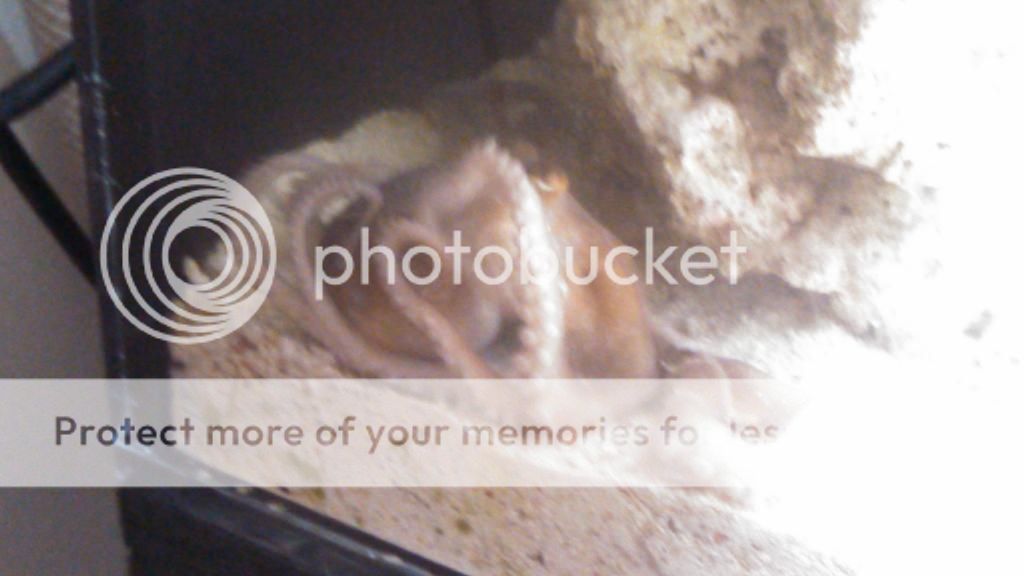
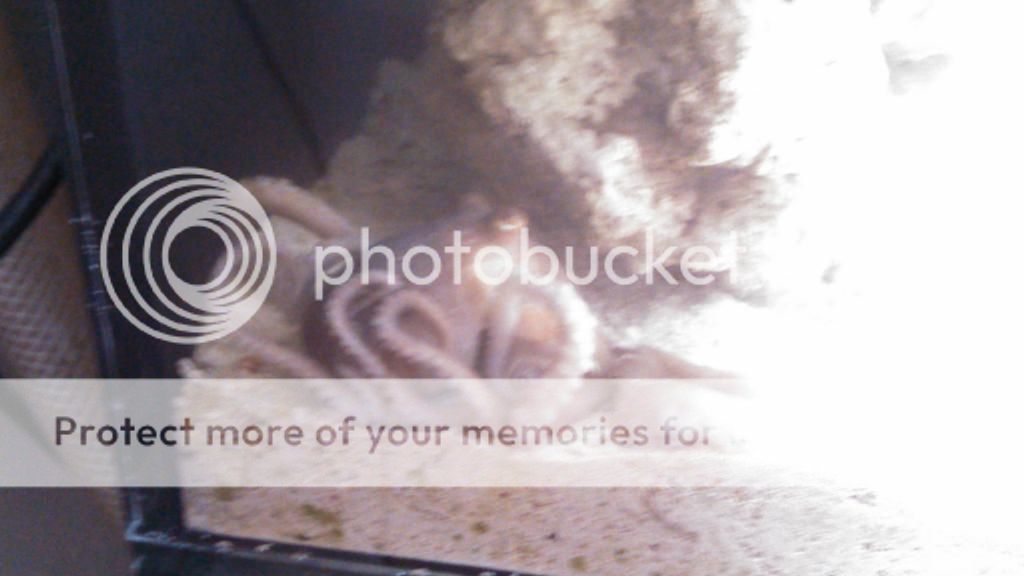
Sorry about the lousy quality, forgot to wipe the condensation off the tank and didn't want to expose it to too much light.
The last time I purchased them, I determined that they were most likely the Japanese Long Arm Octopus, but didn't get much beyond that. There are a few sites out there that classify the food octopuses served in Japanese Restaurants, but it's difficult at best to determine if it is one of the ones listed on this site (Octopus Species). My best guess is still that these guys come from the Sea of Japan and that they are a pretty temperate species, although they are kept in 50 degree water at the store. My research of where I think these come from leads me to believe that they go from about 50-65 degrees in water temperature, but again, this is all conjecture for lack of a good identification.
Anyway, the first two I bought died within a couple of days. They exhibited very poor health from the get go:
- eyes hidden in their bodies
- low response to stimuli
- little to no desire to right themselves
- one exhibited almost no coloration at all and had a white spot that seemed to be dead tissue on the abdominal area
- severing their own arms
- tissue sloughing/excessive mucous production
Anyway, I got them home and acclimated them slowly over the course of a couple of hours to the chilled tank which is at 51-52 degrees (the store tank is at about 51 degrees per their seafood department). They again didn't look great and exhibited:
- somewhat sunken eyes
- one had excessive mucous production/possible tissue sloughing
- low response to stimuli
I had very little hope that these would survive more than a night (I bought them on Thursday night) and so when I checked on them this morning I was surprised to see that they were still breathing pretty regularly but had not really moved. By the time the afternoon rolled around, they had both moved a little bit with one of them going to a corner of the tank with its eyes completely out. The other that had been sloughing tissue was in the same front corner but had pulled itself together a little bit.
I decided that I would attempt to feed them so first offered a piece of smelt which they both ignored and then with a tiny piece of shrimp. For the one that had moved off into the corner, I put it on the edge of its body and it very slowly moved the shrimp to its mouth and proceeded to bunch itself around the piece of shrimp, albeit in what seemed like slow motion. It stayed in this eating position with its mantle bunched up and its arms pulled together to hold the piece of shrimp for about 5 minutes. It didn't eat the whole thing, but it did eat a little bit of it. When I saw this, I decided to try and feed the other one that had not reacted at all to offerings of food. I put a piece of shrimp on the glass where its arms were spread apart a little bit and tucked it slightly under the mantle so it stayed put. After a few minutes it slowly began to move its arms and then it took about 30 seconds to move the piece of shrimp to its mouth where it began to eat the piece of shrimp.
I am probably being overly optimistic right now about their chances for survival (plus, I have 2 in the same 90 gallon system since they typically don't survive and have never shown any aggression) but this is the first time I have gotten any of them to eat since I had the one that was eating in a warmer tank and then I ended up killing it by accident by moving it inside into a warmer system. Neither one ate the full piece of shrimp (very tiny pieces, only about the last section of the tail) but nevertheless, they did eat which is pretty surprising.
This is a picture of the one that looks to be healthier overall that ate when I put the shrimp on its arm.


Sorry about the lousy quality, forgot to wipe the condensation off the tank and didn't want to expose it to too much light.

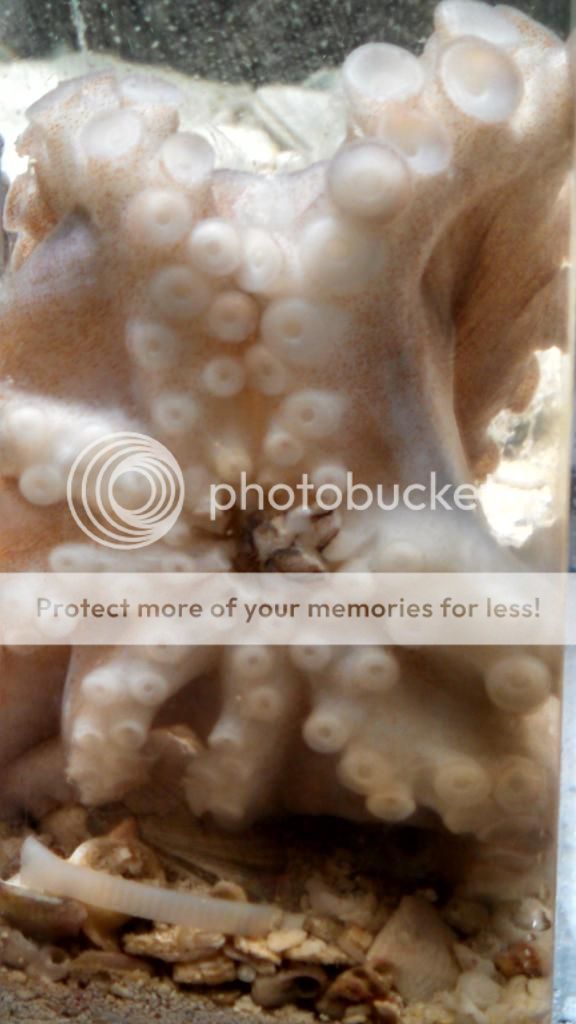
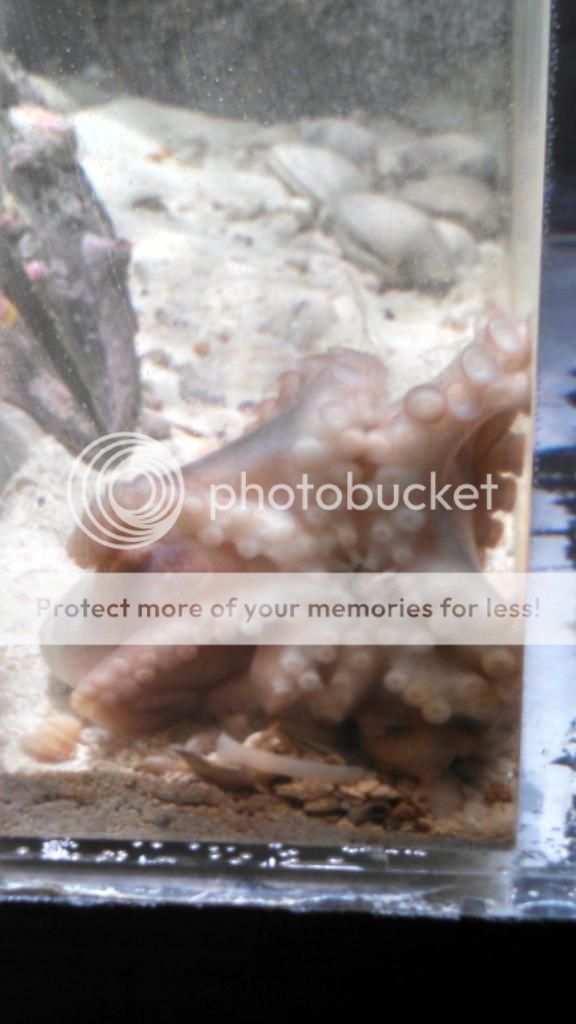
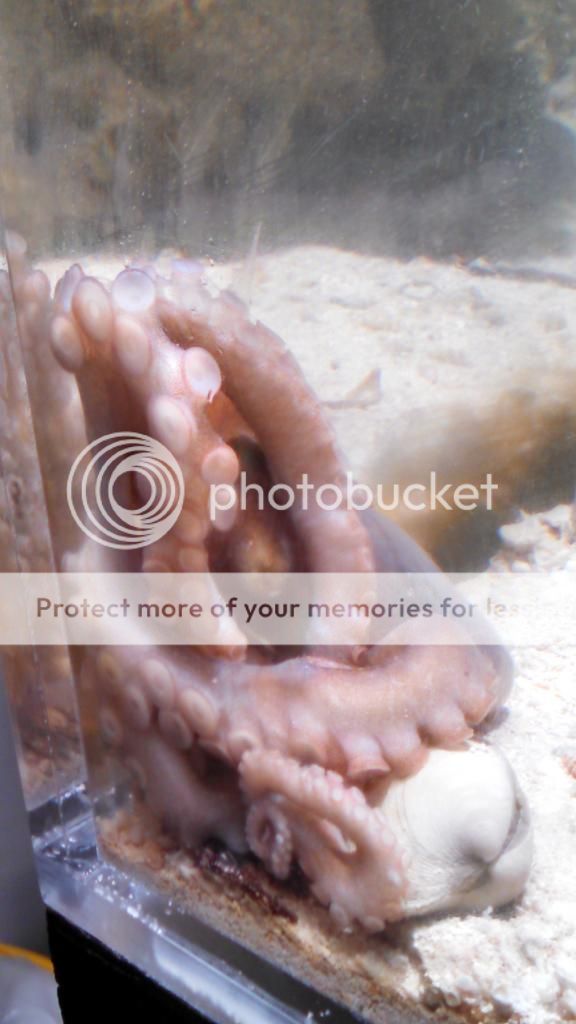
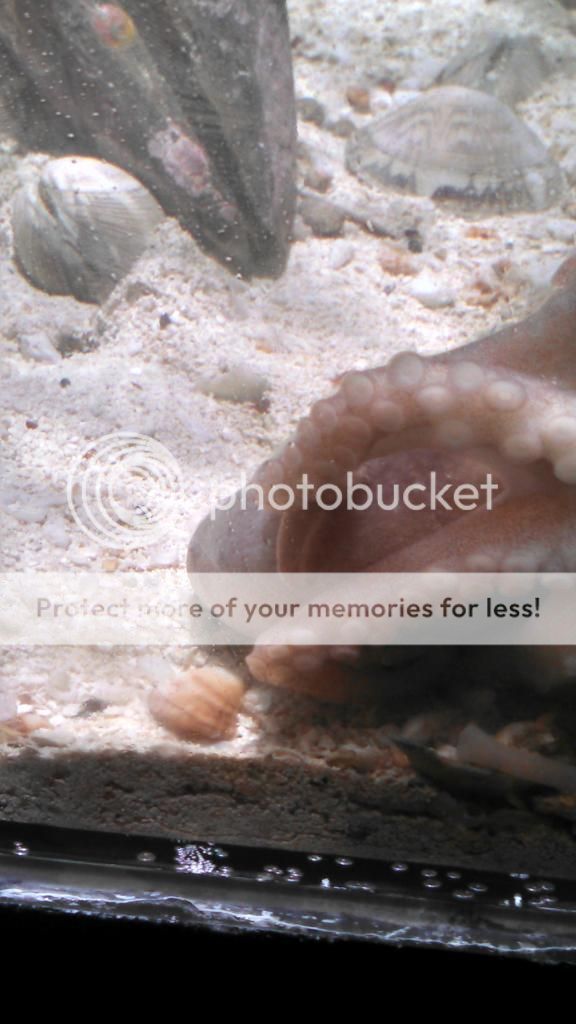

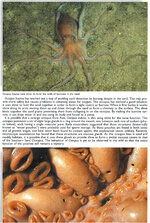
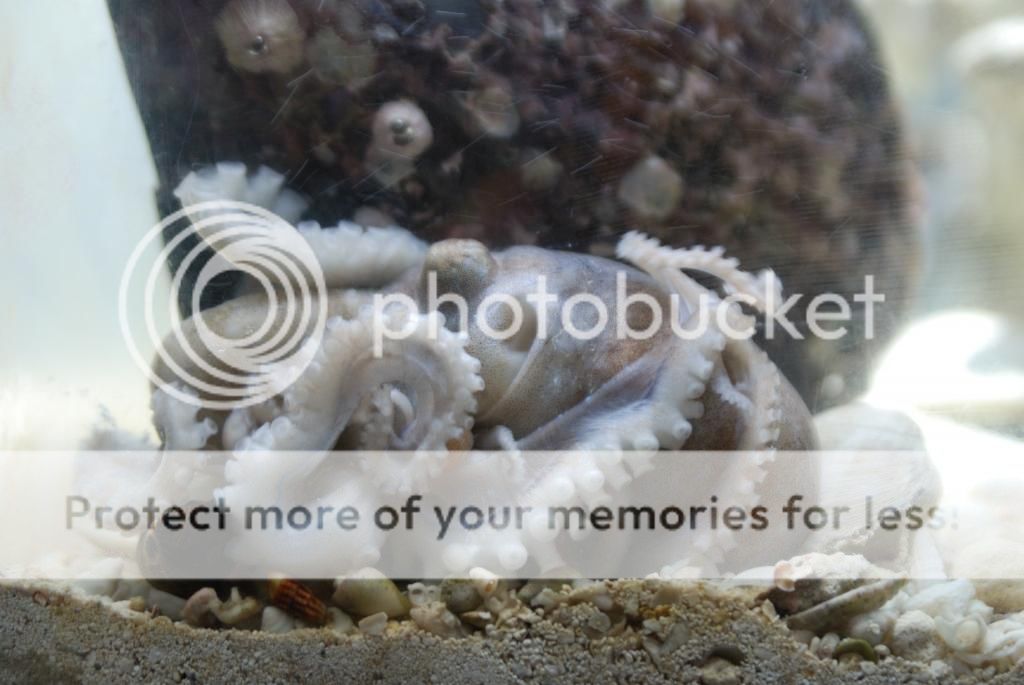
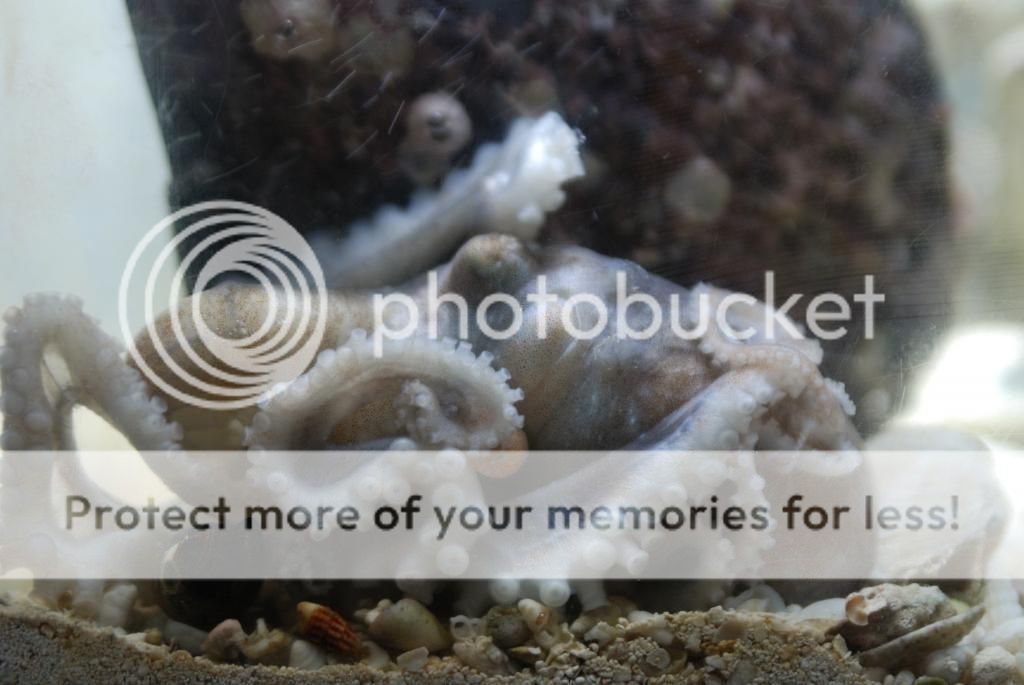

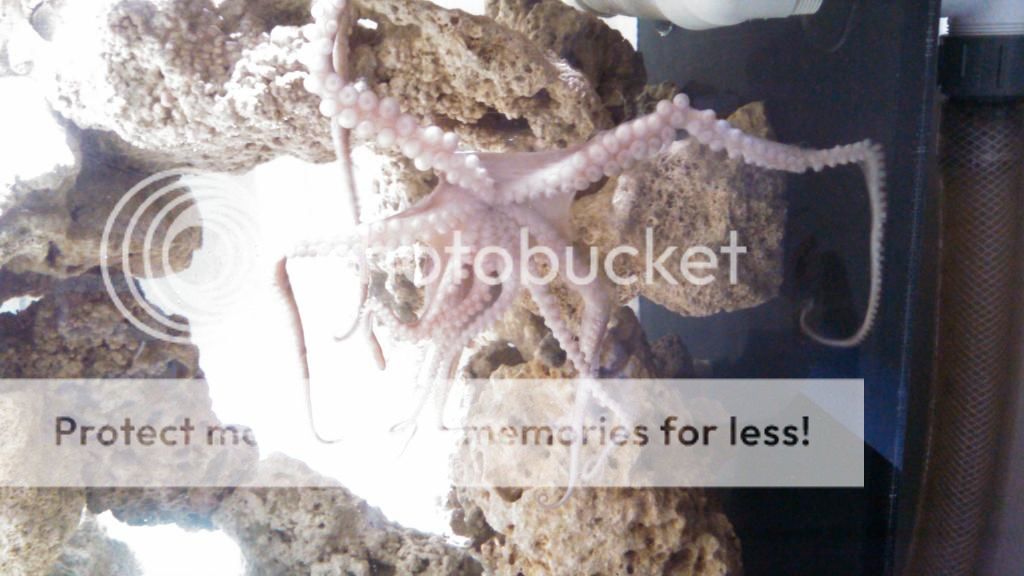
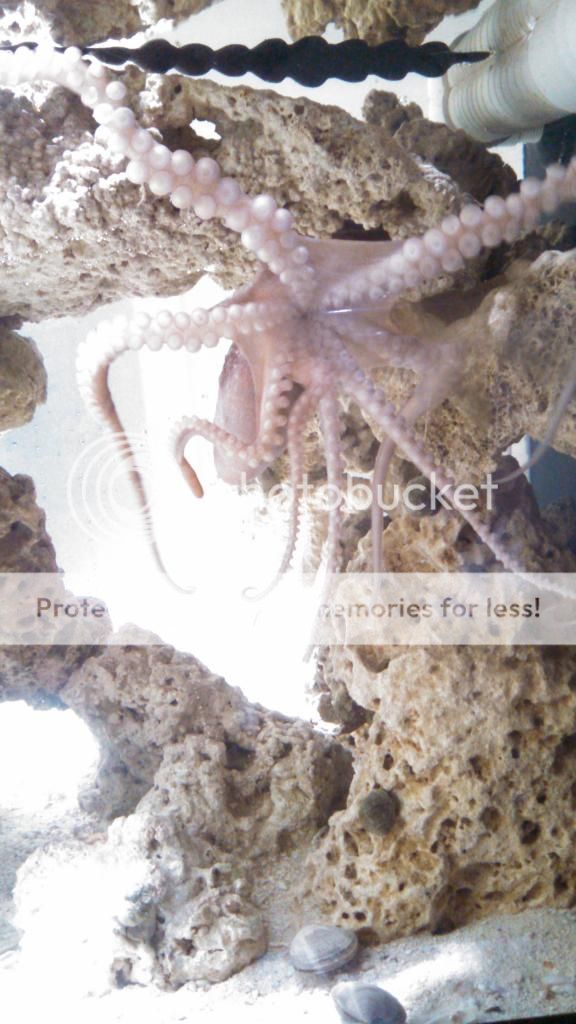
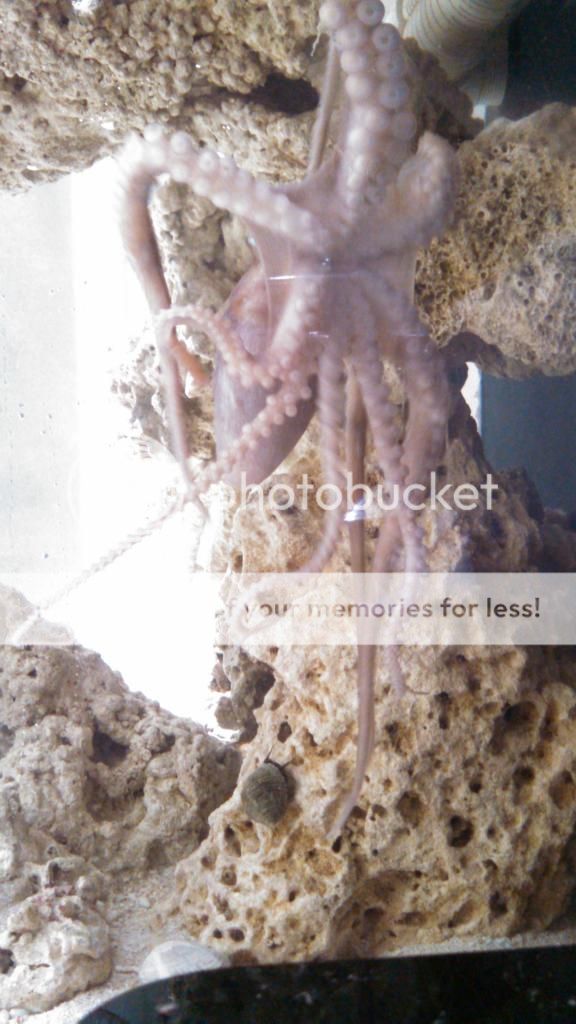
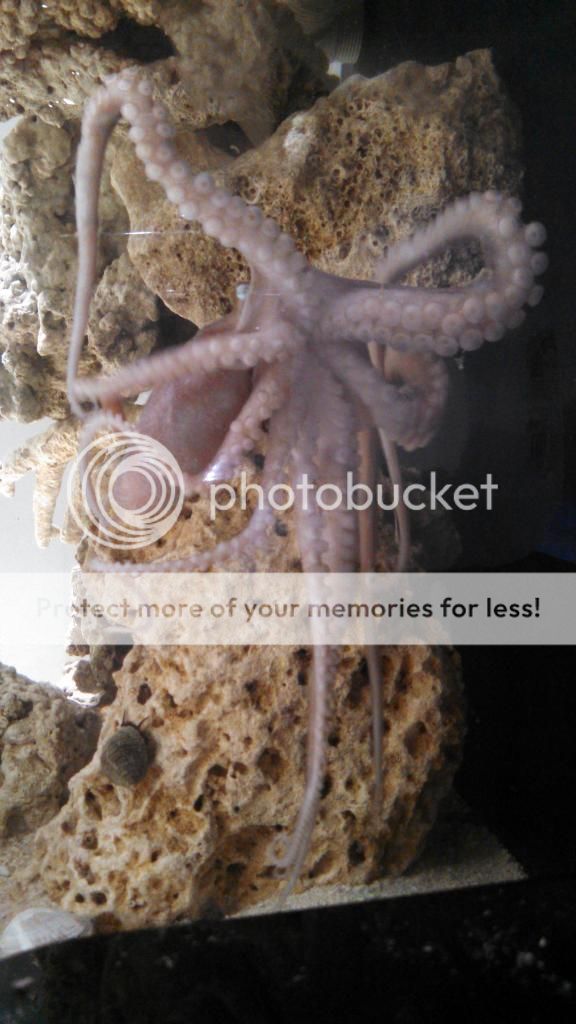
 ).
). 